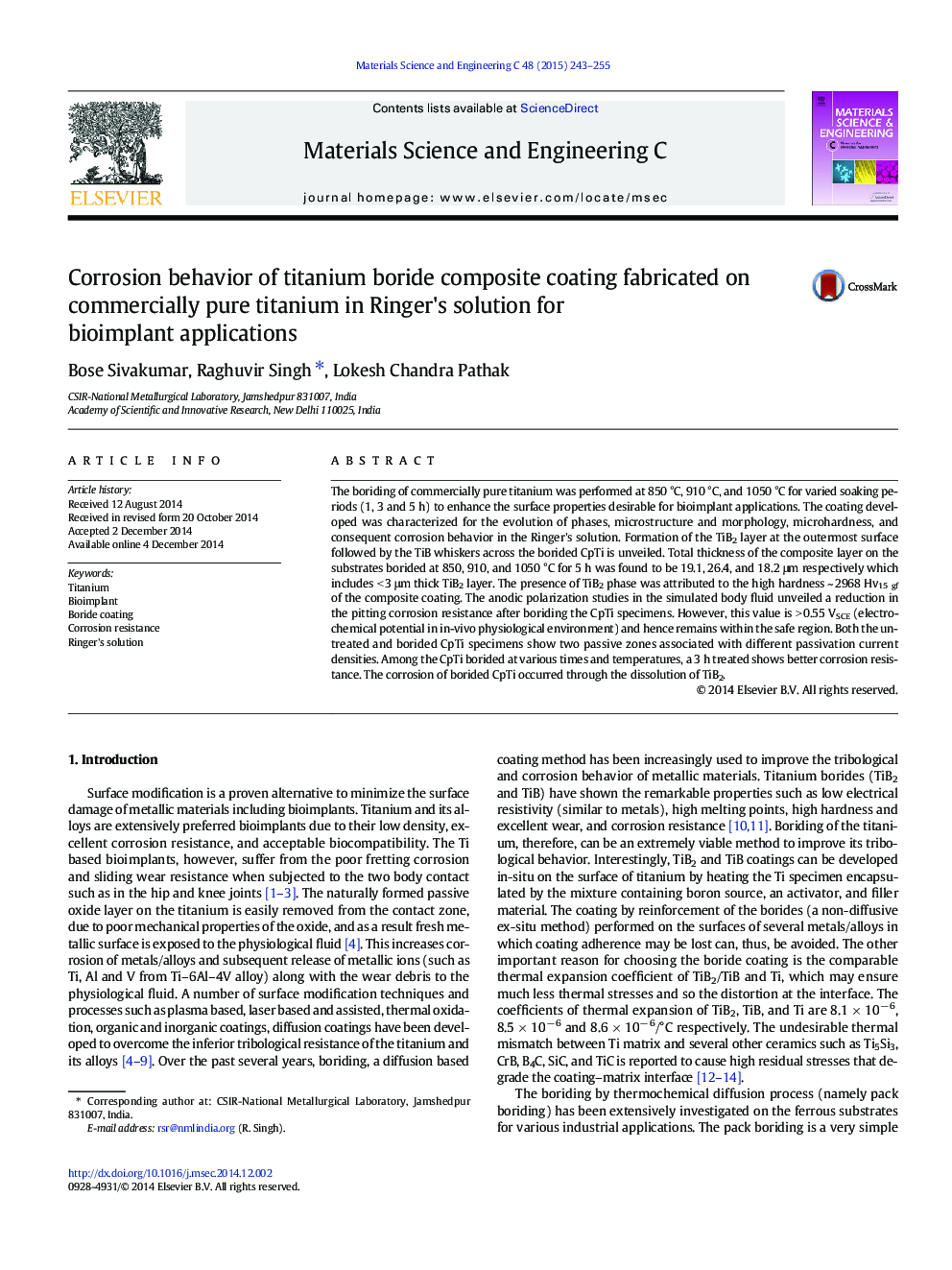| کد مقاله | کد نشریه | سال انتشار | مقاله انگلیسی | نسخه تمام متن |
|---|---|---|---|---|
| 1428454 | 1509173 | 2015 | 13 صفحه PDF | دانلود رایگان |
• The boride coating on the CpTi is attempted at 850 to 1050 °C for 1–5 h.
• Coating contained TiB2 (< 3 μm thick) at outermost surface followed by TiB whiskers.
• Reduction in the pitting resistance after boriding the CpTi specimens is noticed.
• Best corrosion resistance is obtained for the CpTi borided for 3 h.
• The corrosion of boride coated CpTi occurred through the dissolution of TiB2.
The boriding of commercially pure titanium was performed at 850 °C, 910 °C, and 1050 °C for varied soaking periods (1, 3 and 5 h) to enhance the surface properties desirable for bioimplant applications. The coating developed was characterized for the evolution of phases, microstructure and morphology, microhardness, and consequent corrosion behavior in the Ringer's solution. Formation of the TiB2 layer at the outermost surface followed by the TiB whiskers across the borided CpTi is unveiled. Total thickness of the composite layer on the substrates borided at 850, 910, and 1050 °C for 5 h was found to be 19.1, 26.4, and 18.2 μm respectively which includes < 3 μm thick TiB2 layer. The presence of TiB2 phase was attributed to the high hardness ~ 2968 Hv15 gf of the composite coating. The anodic polarization studies in the simulated body fluid unveiled a reduction in the pitting corrosion resistance after boriding the CpTi specimens. However, this value is > 0.55 VSCE (electrochemical potential in in-vivo physiological environment) and hence remains within the safe region. Both the untreated and borided CpTi specimens show two passive zones associated with different passivation current densities. Among the CpTi borided at various times and temperatures, a 3 h treated shows better corrosion resistance. The corrosion of borided CpTi occurred through the dissolution of TiB2.
The boriding of CpTi was performed at 850 to 1050 °C for 1–5 h to enhance the surface properties desirable for bioimplant applications. The coating developed was characterized for the evolution of phases, microstructure and morphology, microhardness, and corrosion behavior. The formation of a TiB2 layer at the outermost surface followed by the TiB whiskers across the borided CpTi is unveiled. The thickness of the composite layer obtained was 19.11–18.20 μm at 850–1050 °C boride for 5 h. The corresponding volume fraction of the composite layer is found to be 0.21–0.23 at 850–1050 °C at 5 h. The highest hardness of the coating obtained is ~ 2968 Hv15 gf which is attributed to the TiB2 formation. A reduction in the pitting resistance after boriding the CpTi is observed in Ringer's solution. The anodic polarization studies revealed a better corrosion resistance of the borided CpTi for 3 h which is in agreement with the results obtained from EIS studies.Figure optionsDownload as PowerPoint slide
Journal: Materials Science and Engineering: C - Volume 48, 1 March 2015, Pages 243–255
